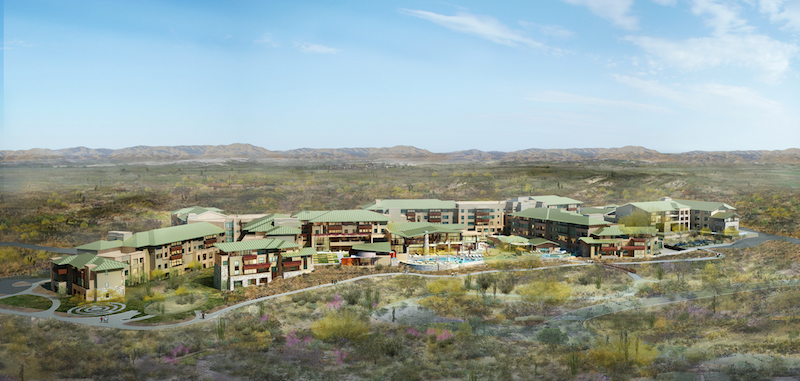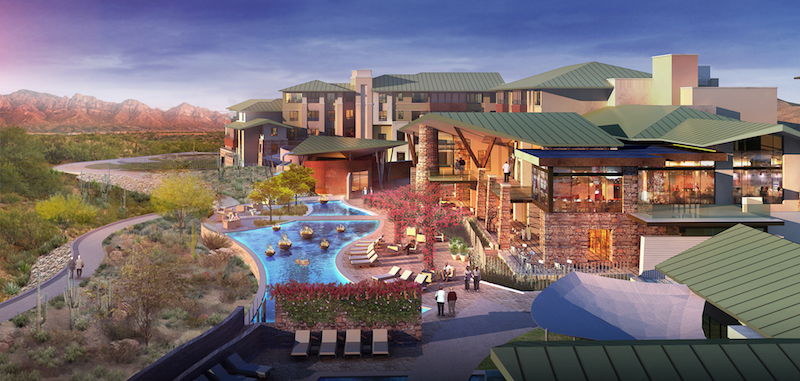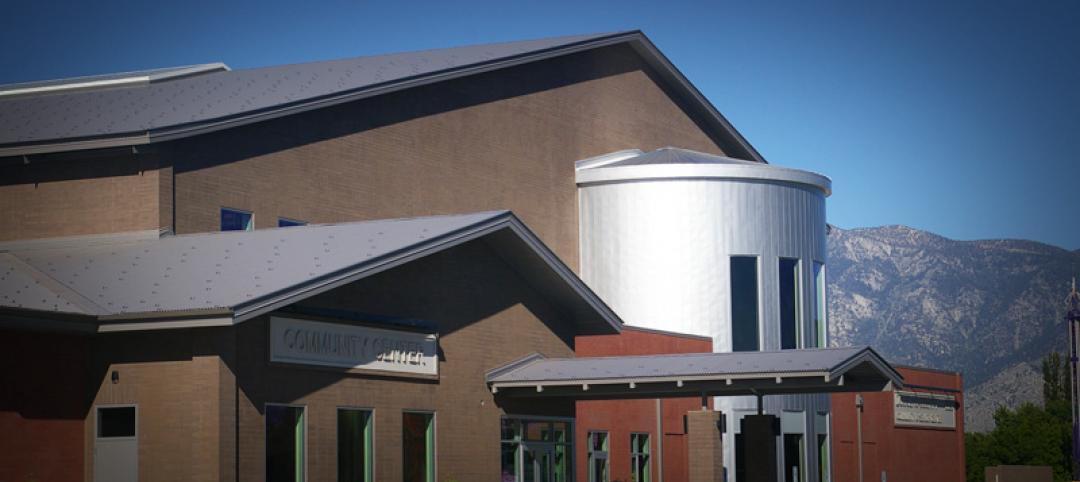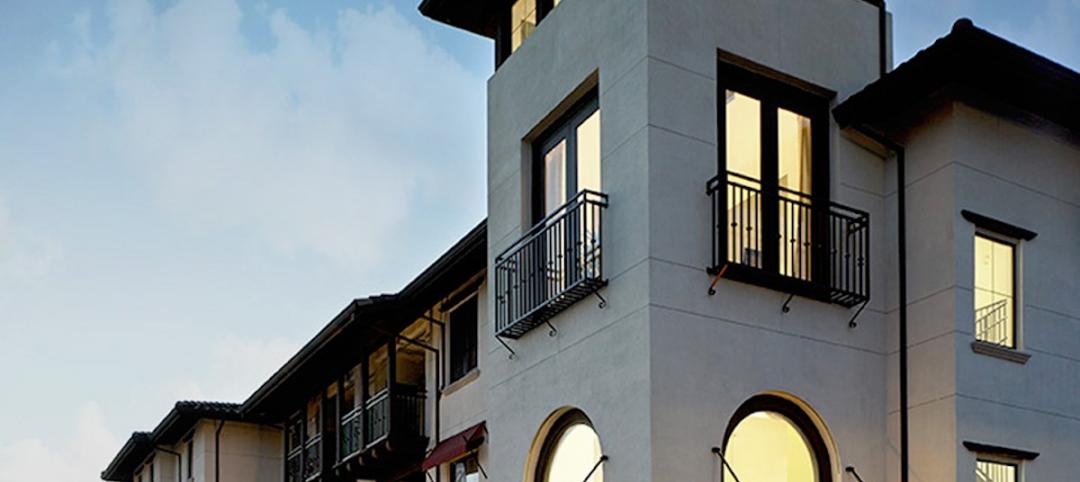Lisa Israel, CEO and President of La Posada, and Joni Condi, COO and Senior VP of La Posada, are working to build a community that promotes healthy aging, gives residents ample freedom of choice, and creates a sense of belonging in which they may thrive. To bring this vision to life, Israel and Condi have partnered with Diversified Design and Construction, landscaping firm Talley Associates, interior design firm THW Design, and three: living architecture to create Nakoma Sky.
Nakoma Sky is a 70-acre, desert-resort senior living community designed for an active lifestyle. La Posada, a nonprofit senior living organization that owns and manages properties, has engaged three: living architecture to design a living environment that connects its residents to the outdoors, not only visually but also socially. With more than 30 years of experience designing luxury hospitality and senior living, three, in conjunction with La Posada has created a vision that will welcome current and future generations to a leisure resort-lifestyle that encourages growth and wellness.
“Oro Valley is just north of Tucson, a resort destination that is perfect for the vision we are going to bring to reality,” Gary Koerner, AIA, NCARB, President of three: living architecture, said in a press release. “The property is nestled in the valley foothills between Catalina and Saguaro Mountain Ranges, with a picturesque backdrop of vivid mountains that are illuminated in warm, brilliant colors twice a day at sunrise and sunset. With the natural surroundings being breathtaking on their own, we aimed to put together a layout with buildings that would maximize views from any point on the property, while also being mindful of the community’s impact on the environment. The result of our creative endeavors is a ‘Neo-Wrightian’ desert-architectural-style community nested into the desert landscape with unobstructed views of the nearby mountain ranges, offering indoor and outdoor living experiences.”
 Rendering courtesy of three: living architecture
Rendering courtesy of three: living architecture
Nakoma Sky is a 500,000-sf community that is estimated to cost between $90 and $100 million. It’s a sizable project featuring 220 spacious independent living apartments available in one, two and three bedroom floorplans, as well as 24 assisted living apartments and 24 memory care apartments. The five-story community will sit above an underground parking garage located beneath the independent living entry court. In addition, residents will be able to enjoy amenities in common areas scattered throughout the campus, including: resident lounges, a library, a fitness center overlooking the mountains, areas for multi-purpose use, art studios/crafting rooms, meeting spaces, a salon, varying dining venues, and outdoor recreational areas.
One of the most notable outdoor amenities is a 3,400-sf infinity pool located near the heart of the community. The pool, which features customized acoustics and lighting, has a mist curtain that acts as a screen for movies to be projected on. Other artistic outdoor amenities include a sculpture garden, a stargazing platform, a yoga lawn, courtyards with splash pools for children, dog parks, hiking trails, a playground, fireplaces, BBQ grills, outdoor dining venues, an aerobics pool, and desert gardens. The architectural team wanted to create outdoor spaces where residents could host parties or meet for gatherings.
For indoor amenities, three incorporated expansive windows allowing sunshine to spill into the community. The roof forms compliment the mountains’ angles and allow for tiered viewpoints. The entire design is geared toward a well-traveled active resident who wants to live life to the fullest.
 Rendering courtesy of three: living architecture
Rendering courtesy of three: living architecture
Related Stories
| Jan 14, 2016
How to succeed with EIFS: exterior insulation and finish systems
This AIA CES Discovery course discusses the six elements of an EIFS wall assembly; common EIFS failures and how to prevent them; and EIFS and sustainability.
Sponsored | Senior Living Design | Aug 5, 2015
Douglas County Community and Senior Center, a focal point for all ages
In Douglas County, 30 percent of the 46,000 residents are senior citizens; thus the need for a senior community center had been vocalized for decades.
Multifamily Housing | Apr 27, 2015
The empire strikes back: George Lucas proposes new affordable housing complex he'll finance alone
The latest plans are seen by some as payback for community opposition to his past real estate ventures.
Multifamily Housing | Mar 10, 2015
KTGY homes in on seniors with new studio
Its director, Doug Ahlstrom, says designs will emphasize socialization and community.
Codes and Standards | Feb 12, 2015
New Appraisal Institute form aids in analysis of green commercial building features
The Institute’s Commercial Green and Energy Efficient Addendum offers a communication tool that lenders can use as part of the scope of work.
| Jan 2, 2015
Construction put in place enjoyed healthy gains in 2014
Construction consultant FMI foresees—with some caveats—continuing growth in the office, lodging, and manufacturing sectors. But funding uncertainties raise red flags in education and healthcare.
| Dec 28, 2014
AIA course: Enhancing interior comfort while improving overall building efficacy
Providing more comfortable conditions to building occupants has become a top priority in today’s interior designs. This course is worth 1.0 AIA LU/HSW.
| Nov 18, 2014
New tool helps developers, contractors identify geographic risk for construction
The new interactive tool from Aon Risk Solutions provides real-time updates pertaining to the risk climate of municipalities across the U.S.
| Oct 21, 2014
Perkins Eastman white paper explores state of the senior living industry in the Carolinas
Among the experts interviewed for the white paper, there was a general consensus that the model for continuing-care retirement communities is changing, driven by both the changing consumers and more prevalent global interest on the effects of aging.
| Oct 16, 2014
Perkins+Will white paper examines alternatives to flame retardant building materials
The white paper includes a list of 193 flame retardants, including 29 discovered in building and household products, 50 found in the indoor environment, and 33 in human blood, milk, and tissues.















